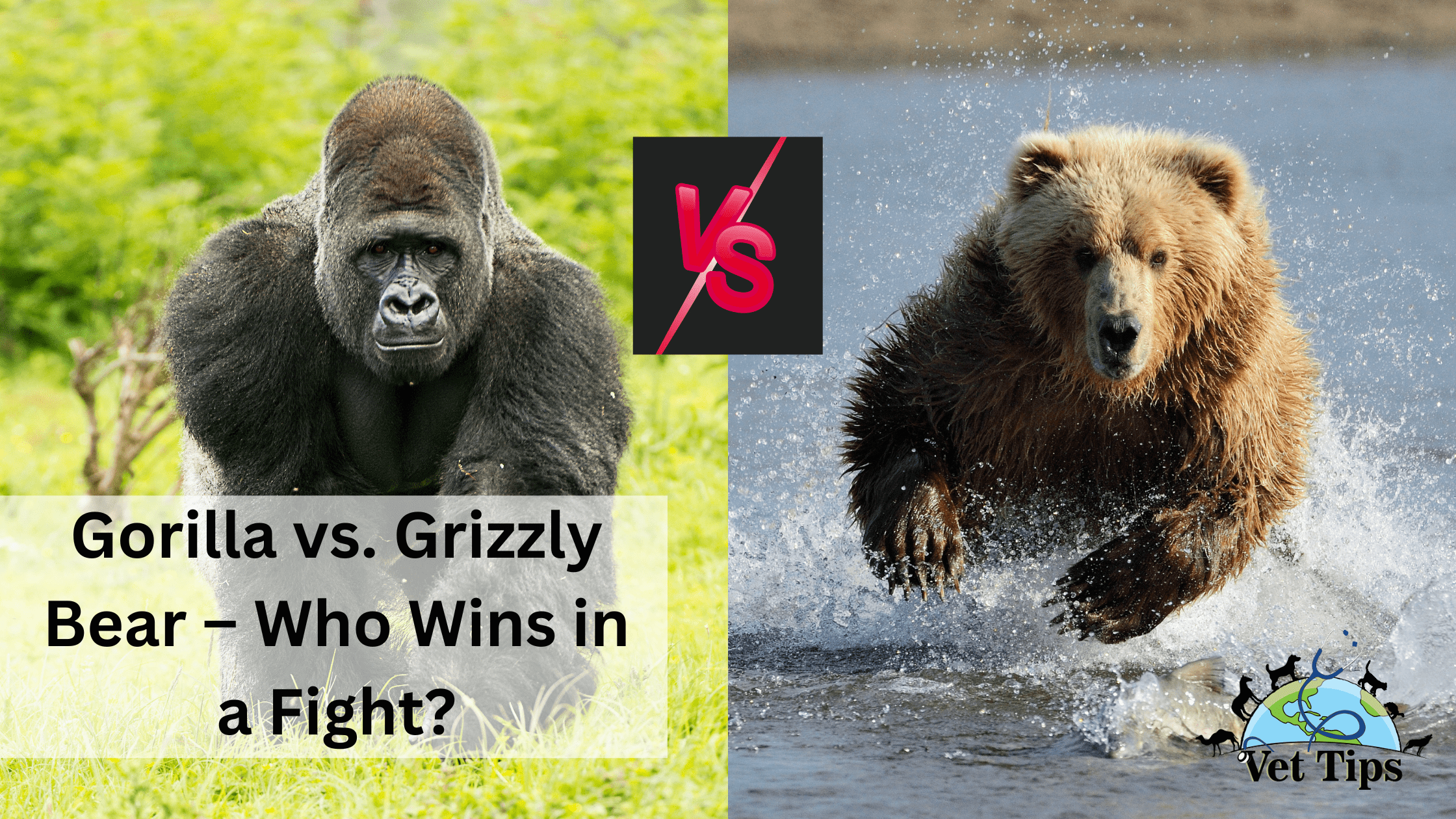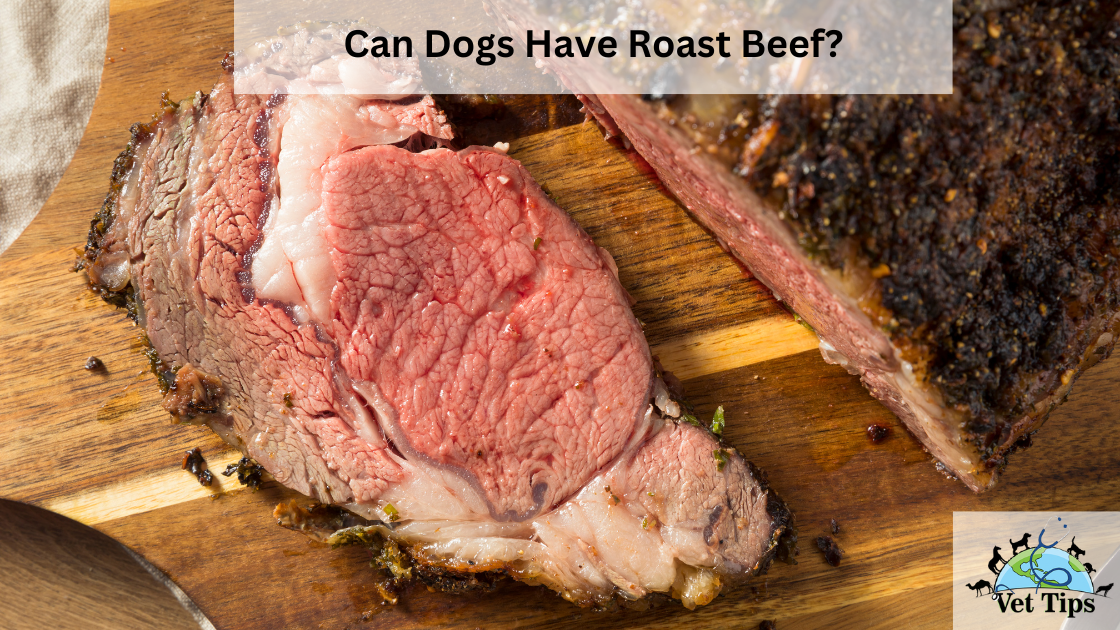“Gorilla vs. Grizzly Bear – Who Wins in a Fight?” is the most emerging question asked by new wild animal lovers. Let us discuss who wins this fight and how!
Gorilla vs. Grizzly Bear – Who Wins in a Fight?
There have been a number of incredible battles that have taken place in nature. Often, they are animal vs. animal battles, but now and then, there is a man vs. animal battle, which doesn’t happen very often, but one battle keeps cropping up, and the people have been discussing whether a Gorilla or a Grizzly bear will prevail in a fight.
However, it is undecided because neither animal possesses the same strength, mass, height, or weight. Neither a Gorilla nor a grizzly bear is alike; each has its own set of talents and qualities that distinguishes them from the other. However, each is amazing in its own right.
If there were a fight between a Grizzly Bear (Ursus arctos horribilis) and a Gorilla (Gorilla beringei), there would be little doubt who would come out on top, but we’ll get to that in a minute. While they may have some similarities, the Gorilla and the grizzly bear are entirely different creatures.
They live in drastically different environments, consume wildly different foods, and grow to vastly different sizes from one another, although they share some characteristics.
Although a Gorilla is extremely quick, relatively powerful, and has longer arms, there is no way a Gorilla could defeat a grizzly bear in a fair battle due to the bear’s far greater size and speed.
What Are the Primary Distinctions Between Gorilla and Grizzly Bear?
In appearance, a Grizzly Bear has a big spherical head with a snout that is nearly canine in shape. Gorillas have flatter noses, with prints as distinct as human fingerprints and pointier skulls than their blackback counterparts.
Gorilla ears are difficult to differentiate from human ears since they are located in the exact location on the head. A Grizzly Bear’s ears, which are tiny and spherical and covered with fur, are located high on their heads.
Grizzly Bears have thick, dark brown fur that protects them from the elements. Gorillas have silky, springy hair all over their bodies, except for their hands, chests, faces, and the soles of their feet.
When both Grizzly Bears and Gorillas stand on their hind paws, they are around two feet shorter than each other on average. When fully grown, Gorillas may weigh up to about 500lbs, roughly half the weight of the biggest Grizzly Bears.
Grizzly Bears have twenty claws, each several inches in length, one on each toe of their four feet. They have a total of 20 claws. According to experts, Gorillas have nails on the tips of their fingers and toes, much like humans do.
Gorilla vs. Grizzly Bear – Who Wins in a Fight? (Cont.)
What Are the Physical Characteristics of the Gorilla and Grizzly Bear?
Physical Characteristics of Gorillas Are:
Mountain gorillas, often known as the Gorilla, are a subspecies of the eastern gorilla (Gorilla bringer). Gorillas are adult males who have developed a saddle of grey or silver-colored hair on their backs due to their years of experience.
Their back hair is shorter than most of their other body parts, and their arm hair is particularly long. A Gorilla is the alpha male in a group of people (alpha male).
When compared to other gorillas, their fur is thicker and longer. When compared to other eastern lowland gorillas, they are much smaller in stature. They have long arms and walk with their knuckles on the ground.
When a male mountain gorilla stands right, he stands 150 cm tall, but female mountain gorillas stand 130 cm tall.
A male’s weight would be 195kg, while a female’s weight would be 100kg.
The tallest mountain gorilla stood 1.95 meters tall, with a chest of 1.98 meters broad and 267 kg.
The muscles and bones of gorillas are far more durable than those of humans. They can also go at a speed of 23-25 miles per hour.
The gorilla is mostly terrestrial and active during the day (diurnal). It moves about on all four limbs, with a portion of its weight supported on the knuckles of its fingers. This kind of movement, known as knuckle-walking, is also used by chimpanzees to get about. Gorillas will occasionally stand up straight, usually when they are exhibiting. Females and young climb more than males, primarily because much of the vegetation cannot sustain the weight of males on its branches.
The Following Are the Physical Characteristics of Bears:
It is a subspecies of brown bear that lives in Northern America, and according to the state’s measures, they are not an endangered species.
These bears are known as grizzlies because of their horrible and fear-inspiring nature, which has earned them the name. Comparatively speaking, the grizzly bears found inland are smaller in stature than the grizzly bears found around the coast.
Female grizzlies weigh 130-180kg, while males weigh 180-360kg. Their typical length is 198cm, shoulder height 102cm, hind-foot length 28cm, and newborn bears may weigh less than 500gm, with claws reaching up to 2-4 inches in length.
Females and males on the interior and coast are vastly different in weight. Females (inland) weigh 136kg, whereas a coastal bear weighs 227kg. Males (inland) weigh an average of 272kg, while a coastal bear weighs 408kg.
This disparity in weight might be attributed to the different types of food and nutrients that are ingested.
These bears are so large and have straight, solid claws that they rarely climb, even as cubs. On the other hand, other grizzlies are remarkably agile and can run at speeds of up to 48 kilometers per hour (30 mph). Although they have limited eyesight, they have been known to attack humans without any apparent provocation. Female wolves with cubs are the most ferocious of the species.
The Behavior of Gorillas and Grizzly Bears
The Gorilla’s behavior is as follows:
In general, Gorillas are quiet and reserved; they are incredibly sociable and like to congregate in large groups, and they are non-territorial in that they protect their groups rather than the region they inhabit.
In the event of an external attack from another animal or even from another gorilla, a Gorilla will defend its group and protect them even if it means risking its own life.
Grizzly bear behavior is as follows:
The majority of them are lonely creatures who explore the woodlands until they mate, with the apparent exception of female Grizzlies and their cubs, who live together as a family.
Particularly during the mating season, male grizzly bears are known to engage in conflicts with one another. They will defend their territory and attack if threatened, surprised, or if the mother has cubs, but they will generally avoid human interaction until provoked.
What Is the Diet of Gorillas and Grizzly Bears?
Gorillas Diet:
Gorillas are primarily herbivores, and their diet consists mainly of the leaves, shoots, and stems of various plant species. They also consume bark, roots, flowers, fruits, and small vertebrates, in addition to other plant materials.
Grizzly Bears Diet
Grizzly bears are Omnivores, meaning they will eat everything, from a mouse to a moose or an elk, to survive. Furthermore, they forage for food or corpses that other animals or birds have left behind.
Fruits and insects are also a significant element of their nutritional intake. While gathering during the summer months is not their typical mode of conduct, this pattern of social interaction is disrupted when they catch salmon spawning in the river.
In addition to this, grizzly bears have been known to steal food from other predators on occasion.
Gorilla vs. Grizzly Bear – Who Wins in a Fight? (Cont.)
What Is the Habitat of Gorillas and Grizzly Bears?
Gorilla’s Habitat
The Gorilla is an endangered species, and the only place where you can see one is in the Albertine Rift mountain cloud forest, which is spread across the borders of Rwanda, the Democratic Republic of the Congo, and Uganda. The Albertine Rift mountain cloud forest is home to a population of Gorillas on the verge of extinction. These are the Virunga volcanic ranges, dormant and active: Karisimbi, Mikeno, and Visoke.
The vegetation is incredibly dense at the base of these volcanoes, making it difficult to see through them. In Uganda’s Bwindi National Park, there is yet another population of the species.
It is frequently gloomy, misty, and chilly in the forests where these gorillas reside. The extent of the gorillas’ home ranges, or the region they occupy during the year, fluctuates and depends on various circumstances, including food availability.
This is due to poaching and habitat degradation caused by activities such as illicit mining, which has resulted in their being classified as an endangered species.
Grizzly Bear’s Habitat
These animals are in Alaska, Western Canada, the Northwest United States (Idaho, Montana, and Wyoming), and even Yellow Stone National Park. Their home range might be as large as 6000 square miles in extent. For them to thrive, they need to be separated and away from development.
Similarities Between the Gorilla and the Grizzly Bear
Although they do not share the exact geographical location on Earth, there are several parallels between these two giants.
Mobility
When first seen, these animals, capable and accustomed to traveling on four or two legs, may appear enormous balls of fur and fat. Don’t get taken in by the pretense. Bears and gorillas can reach tremendous speeds and hurtle towards any target once they have their engines revved up.
This, however, pales in comparison to the carnivorous cousin of the species. As soon as its husky body is hefted forward and the engine is revved up to full speed, the bear can easily outpace any gorilla on the planet, reaching speeds of up to 56 kilometers per hour (35 mph).
Aggression and Fury
Making a definitive determination regarding these massive beasts is more aggressive and ferocious without resorting to subjective reasoning.
While some have asserted that the most massive grizzly bear outnumbers the most massive Gorilla, it is apparent that both are capable of wreaking havoc on their surroundings.
Social Status
Both the bear and the gorilla are unrivaled and untouchable in their surroundings, and both are at the upper edge of food chain in their respective ecosystems.
Unless there is a species with suicidal inclinations, it will take something extraordinary to question the greater strength and authority of the bear or the gorilla in their natural environment.
This sense of safety and comfort may contribute to the peaceful and carefree manner the two creatures appear to pass their time.
Gorilla vs. Grizzly Bear – Who Wins in a Fight? (Cont.)
Can the Hunter Become the Hunted?
Even though bears are classified as apex predators, the list of natural predators is short, consisting primarily of other bears and people and scavengers, except the rare tiger.
Bears have an advantage over any other animal due to their brute strength, magnificent size, and agility; their only disadvantage is that they are solitary creatures, which makes them vulnerable to animals that attack in packs, with baby bears, in particular, being at risk of being attacked by these animals.
Who Will Win in the Fight Between the Grizzly Bear and the Gorilla?
In any wild animal-on-animal battle, the larger and stronger creature will almost always prevail due to its sheer size and power, with the obvious exception of snakes’ venom, which has a lethal poison. Things may turn out differently in such a circumstance.
In this contest, our contenders are a grizzly bear with a height of 8 feet, a weight of 360 pounds, a speed of 34 miles per hour, a bite force of 1200 pounds, and claw size ranging from 2-4 inches against a Gorilla with a height of 5-6 feet, a weight of 195 pounds, a speed of 25 miles per hour, and a bite force of 1300 pounds.
The Gorilla’s arms are longer than a bear’s, which provides him an edge in reaching a grizzly bear, but that’s about it when it comes to advantages.
Because grizzly bears are taller and more aggressive than Gorillas, they will have no trouble matching the strength and size of a gorilla while also having a little advantage in claw strength.
Yes, Gorillas are powerful as well, and they have been known to bring down small trees in one fell swoop. However, he will only have a chance if he attacks the grizzly bear from behind the neck. If he attacks from the front, he will only be met by a colossal razor-sharp claw.
Considering that bears have a weaker neck than Gorillas, it is only possible for a Gorilla to get around a grizzly’s neck and bite into his neck with his 1300 psi bite force. This is impossible in other primates, such as chimpanzees, unless the Gorilla is huge compared to the grizzly bear.
For example, a Gorilla that attempts to outrun a grizzly bear will be torn to bits since grizzly bears move at a higher pace (34km/h), a 15-number difference in speed between the two animals.
Furthermore, if the gorilla’s nimble and dextrous arms were torn apart by a grizzly bear, his thumbs would be rendered useless, making head-first going into a battle with an already furious and aggressive, in this case, a grizzly bear, a foolish move.
They are known to kill and consume primarily meat, not just small/other animals, but also bears of different species, particularly young ones, and to do it in large groups.
Any likelihood of a Gorilla battling a grizzly in the wild would exist only if the following conditions were met:
- The Gorilla believes the unit is in danger or is under attack.
- In the case of females, if a grizzly feels surprised or threatened, it will defend itself or its cubs. This will only occur if they have a strong desire to kill the other person in question.
Furthermore, even if a gorilla manages to climb a tree during the battle, a grizzly will pursue it; the notion that grizzlies are incapable of climbing trees is a common fallacy.
However, even if it is incorrect to assume that a Gorilla would surrender easily since they are not known to be violent, a Gorilla would fight even if it meant losing his life to protect his troop or band.
Gorilla vs. Lion
A male lion weighs 420 pounds, which is a lot of weight. They are roughly 8 feet long, can sprint at speeds of up to 50 miles per hour, have 1.5-inch claws, and have a biting force of 650 pounds per square inch.
In a battle between a gorilla and a lion, they would be relatively evenly matched in terms of strength and size. The lion’s speed would be his most significant advantage; nevertheless, it would be of little assistance to him other than getting away from the gorilla.
The lion would make an effort to snarl the victim’s throat. The neck is a modest target that is easily protected by their huge, powerful shoulders for gorillas.
For the gorilla to be lethal to the lion, it would need to bite the lion. Because of the lion’s speed and agility, this would be extremely tough. The gorilla would most likely win the battle since he has the most incredible stamina, which would make him the more probable winner. However, while the lion is no slouch, he lacks the height and power advantage necessary to defeat the gorilla.
Gorillas are huge and powerful creatures who are capable of standing their ground in a battle. The strength of the tiger and grizzly bear, on the other hand, is just overwhelming. The lion would undoubtedly put up a brave struggle, but he would finally succumb to the gorilla’s superior strength.
Gorilla vs. Grizzly Bear – Who Wins in a Fight? (Cont.)
How Are Gorillas and Grizzly Bears Different From One Another?
The Gorilla is scientifically known as the Gorilla beringei beringei, while the Grizzly Bear is scientifically known as the Ursus arctos horribilis. Gorillas are classified as primates, while grizzlies are classified as Carnivora. B
ears such as grizzlies are bigger and more deadly than bears in general. Gorillas are omnivores who eat a diet that is primarily composed of plants. Grizzlies are also omnivores; however, they consume a large amount of meat in addition to vegetables.
Which Are the Most Dangerous, Gorillas or Grizzly Bears?
However, Grizzly Bears are far more violent and deadly than black bears, and they often avoid humans unless provoked or threatened by humans or other animals. Gorillas are generally considered relatively gentle, and human attacks on them are, fortunately, quite rare.
Is Gorilla or a Grizzly Bear More Aggressive?
Gorillas are significantly less violent and are typically regarded as gentle unless they protect their territory or young compared to mountain gorillas. Grizzlies are not known to attack people regularly, although they are more likely than a Gorilla to do this in the event of an unexpected encounter.
Do Grizzly Bears and Gorillas Have Different Feet?
There is no doubt that they have distinct feet. While both can walk on all fours or their hind legs, gorillas have two hands and two feet, similar to elongated human hands, including opposable thumbs, giving them four opposable thumbs but only two feet.
Gorillas have two hands and two feet that are similar to extended human hands, including opposable thumbs. They have four opposable thumbs in total but only two feet. Grizzlies have five-toed paws on all four of their feet, and while they lack the agility of gorilla “hands,” they do have a claw at the end of each toe.
Is Grizzly Bears the Most Fearsome Bear Species on the Planet?
Even though grizzly bears are the biggest bear species, they are not the most dangerous. Polar bears are the rightful owners of this title. However, in confrontations between grizzly and polar bears, the grizzly bear is left standing while the polar bears escape the scene. However, grizzlies are bigger and more violent than polar bears, and they will battle for food more furiously. They also have sharper claws that may swipe and do significant damage.
Tell us in the comments, how you like our article “Gorilla vs. Grizzly Bear – Who Wins in a Fight?”
For similar posts like this, click here.
For the source file, click here.









One thought on “Gorilla vs. Grizzly Bear – Who Wins in a Fight?”